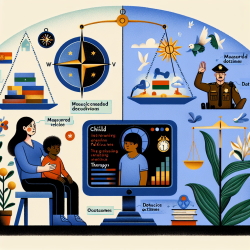Introduction
In the wake of the COVID-19 pandemic, the education sector has faced unprecedented challenges, particularly in underserved communities. The research article "Transforming Social Determinants to Educational Outcomes: Geospatial Considerations" offers valuable insights into how geospatial technologies can be harnessed to improve educational outcomes by addressing social determinants of health.
Understanding Geospatial Technologies
Geospatial technologies encompass a range of tools that capture, store, manipulate, and analyze geographic information. These technologies have been pivotal in various fields, including healthcare and urban planning, and are now being recognized for their potential in education.
Key Findings from the Research
The study highlights significant correlations between educational attainment and several factors, including physical and mental health, access to healthy food, and preventive health measures. These factors vary geographically, underscoring the need for localized educational strategies.
- Physical and Mental Health: Regions with higher rates of poor physical and mental health tend to have lower educational attainment.
- Food Security: Access to healthy food is a critical determinant of educational success, with food deserts often correlating with lower educational outcomes.
- Preventive Health Measures: Uptake of health measures, such as vaccinations, is linked to better educational performance.
Implementing Geospatial Insights in Education
For practitioners, integrating geospatial insights into educational planning can lead to more effective interventions. Here are some strategies:
- Data-Driven Decision Making: Use geospatial data to identify areas with the greatest need for educational resources.
- Targeted Interventions: Develop programs that address specific local challenges, such as health disparities or food insecurity.
- Collaborative Efforts: Partner with local health and community organizations to address the broader social determinants affecting education.
Encouraging Further Research
While the study provides a robust framework, further research is essential to refine these strategies and explore new applications of geospatial technologies in education. Practitioners are encouraged to delve deeper into the data and collaborate with researchers to develop innovative solutions tailored to their communities.
Conclusion
By leveraging geospatial technologies, educators and policymakers can create more equitable and effective educational environments. This approach not only addresses immediate educational needs but also contributes to the long-term well-being of students.
To read the original research paper, please follow this link: Transforming Social Determinants to Educational Outcomes: Geospatial Considerations.










